Play Critically was provided with a review code for this videogame.
Cathedral is a retro adventure platformer set in a fantasy world inspired by classic 8-bit adventures. I play as a nameless, mute knight who wakes up one day high in a cathedral’s tower. While working my way down this tower, I encounter a mischievous Soul dressed in a red cloak who troubles my progress by activating traps. After diverting me into the lair of a giant disembodied eye which I must defeat, the Soul takes an orb from the monster’s corpse. The orb is one of five keys needed to open a sealed door in the cathedral. The amnesiac Soul believes the truth about its past is hidden behind the door, and thinks I might find answers behind it too. We team up to explore the rest of the world, uncover the remaining four orbs, and open the door deep within the heart of the cathedral.
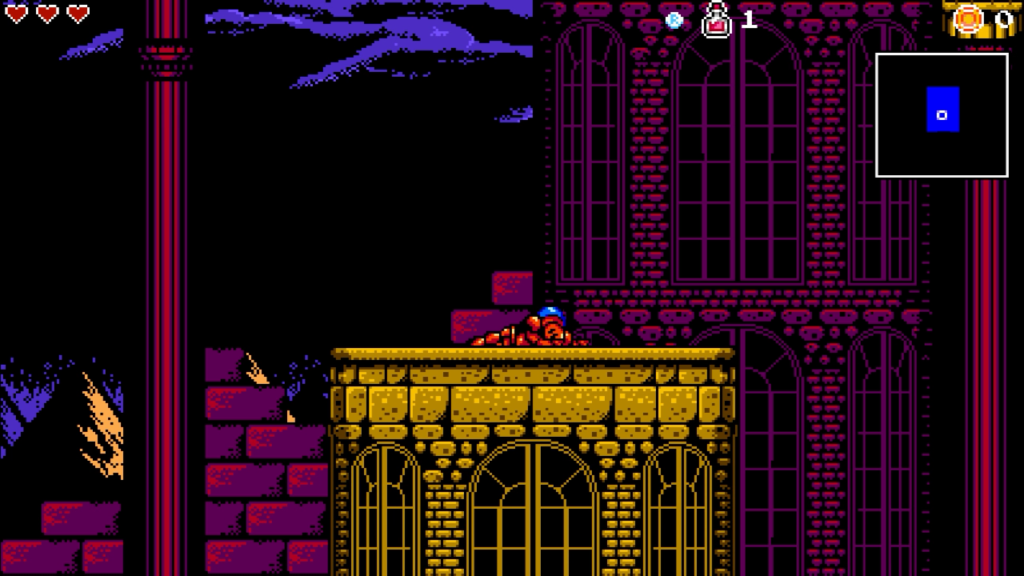
The Knight is a typical adventure platformer player character. They can jump and use their sword to attack. As I explore the world, I unlock a double jump and an air dash to help the Knight reach distant cliffs. Their other tools are more interesting. Minutes in I discover a Shield, which can block a surprising array of attacks. I also find a wrist-mounted crossbow called the Magnus Apparatus which is more useful for activating switches than for fighting enemies. Later on I find a Wand that summons floating platforms and a Magnet that moves heavy metal blocks. Early on, Cathedral is familiar, even rote, but through its advanced tools it develops its own identity over time.
More unusual to the genre is the Soul. They tag along for the entire adventure, clinging invisibly to the Knight until I summon them. Once apparated, I have a few seconds to guide them into narrow gaps the Knight cannot squeeze through, hitting switches and shoving objects to open doors. In some of Cathedral’s more devious moments, I must use the Soul to hit a switch while enemies and obstacles bear down on the helpless Knight. This ability feels underutilized overall and I often forgot that the Soul was part of the plot and the platforming.
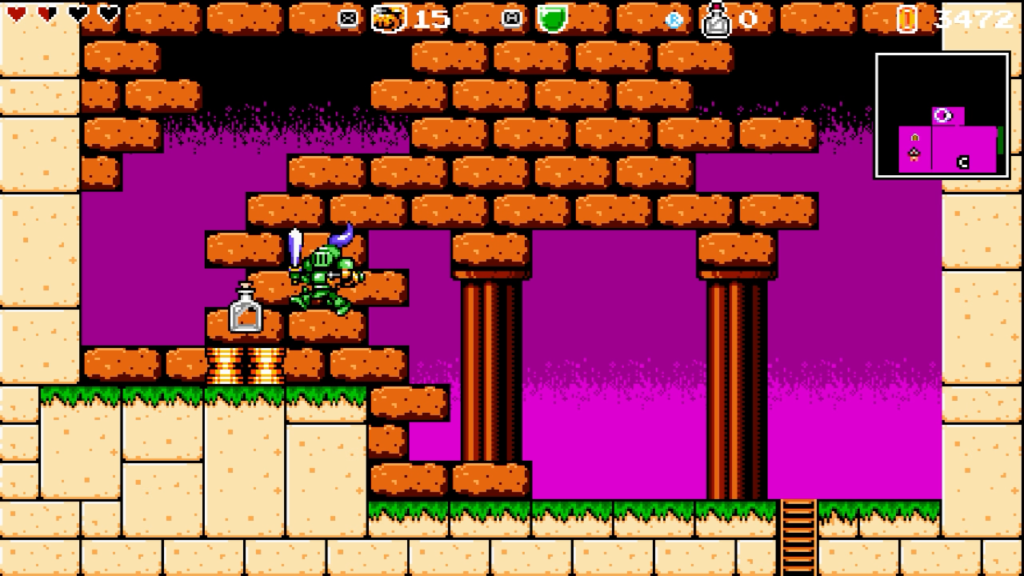
Where Cathedral feels unique is in upgrading the player character. Hearts that expand the health meter and potion charges that provide a life-restoring quaff are rare, so I need to improve the Knight’s armor to gain a fighting edge in combat. Most armor upgrades I find in the form of augmentations hidden in obscure and guarded corners of the world. These provide small passive bonuses like increasing the number of hearts I begin every life with, reducing the healing potion’s cooldown, and even a small percentage chance to take no damage when struck. If I want to increase my armor’s overall defensive value, I have to purchase new suits from shopkeepers in three farflung towns.
To purchase these new suits of armor I need gold. Every enemy I defeat drops a handful of coins and treasure chests filled with riches are common. If I die out in the world then I lose ten percent of my stocked gold before respawning at the last checkpoint, so I am encouraged to spend as much of my gold as possible and make regular trips to town to stock the rest in the bank. Even the bank costs gold; its cap is initially quite limited and I must pay ever-increasing fees to raise that cap to store my ever-increasing hoard.
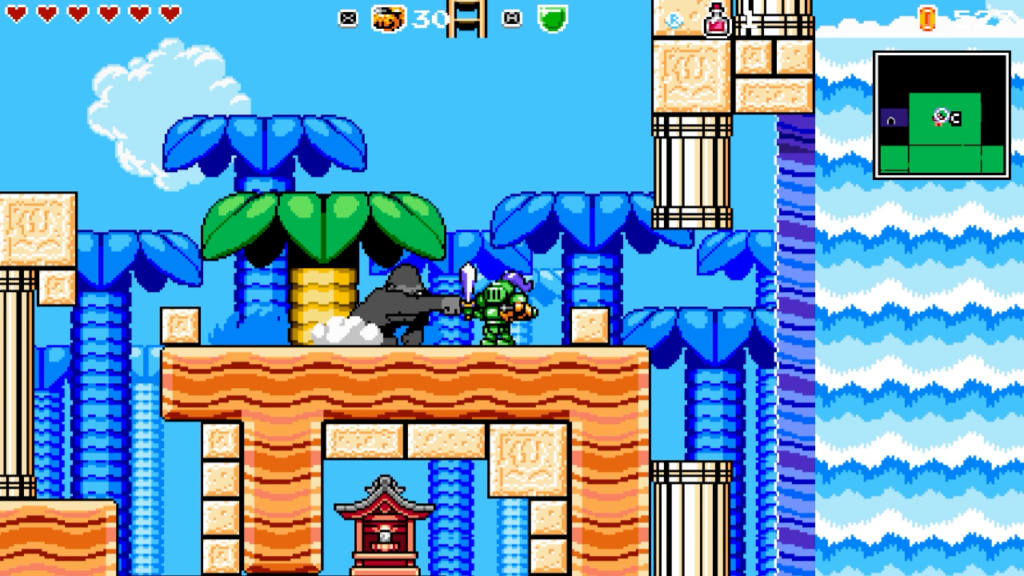
All of these upgrades and gold deposits are hidden away in a standard fantasy world. When I leave the cathedral I find myself in a haunted forest. I find my way through the forest’s ghosts and skull-faced archers to the first town, which is sandwiched between the forest and a colossal graveyard (also haunted). Past the graveyard is a sunny beach where my quest takes me into an ocean filled with sirens, jellyfish, and deep sea anglers. From there, I travel to snowy mountaintops where dwarves delve into pitch-black mines and a dragon’s spire reaches up into the stratosphere. Like the abilities, this world shows occasional flashes of originality the deeper I explore it—cannons that can open new passages by shattering ice in the mountains are notable—but I cannot bring myself to be excited about its existence. It does its job as an adventure platforming environment but it’s all so mundane.
It’s not only the world which is standard. Visually, Cathedral is best described as “generic.” Its art style is competent but nothing stands out as distinct or memorable. Most areas are built out of tiny non-descript squares that could exist anywhere, stripping each setting of all identity.
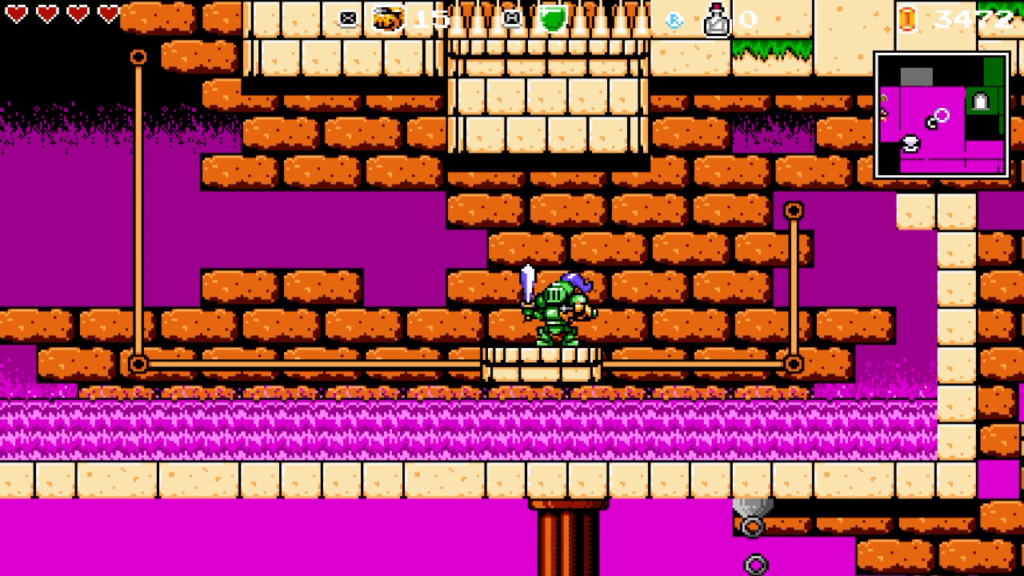
Cathedral makes up for its boring graphic choices with strong use of color. The cathedral itself is resplendent in purples and golds. A poisoned reservoir has acid-washed bricks dotted by sickly pink pools. In the ocean area, the beaches and castle ruins have earth tones that shift into cool blues and greens when I sink beneath the water’s surface. Yet even in color Cathedral still makes uninteresting choices. I don’t need to describe what colors are used in the forest and on the snowy mountain.
Cathedral is not interesting in its design or its construction or its appearance. Where it’s memorable is in its difficulty, and this description is not wholly complimentary. It begins manageably with enemies who deal only a fraction of the Knight’s total hit points, but the early platforming is a glimpse of what Cathedral subjects me to later on. Spikes are everywhere and are navigated past using disappearing-and-reappearing platforms that would feel right at home in a classic Mega Man title.
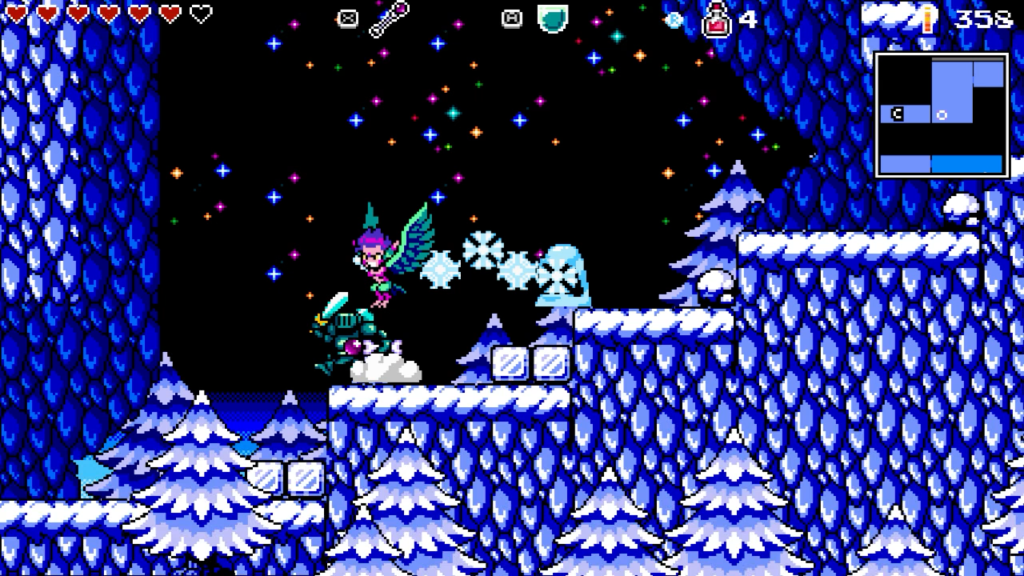
As my journey drags on, enemy damage gradually outstrips available health expansions and armor upgrades. By the time I reach the mountain I face harpies with infuriating movement patterns which can kill the Knight outright in a few hits. They are joined by ice-enchanted blobs who shoot a continuous stream of freezing magic against which there is no counter. It is with no hyperbole that I say this enemy pairing made a four-screen passage leading to the mountaintop’s Hidden Shrine one of the worst platforming experiences of my life. This is to say nothing of the rising platforming difficulty. The final area has several sequences that reward the slightest hesitation or mistake with instant death.
Where the difficulty and the sheer power of monster’s attacks feels appropriate is the bosses. The first menace I encounter is Augr, the Guardian of the Cathedral, a massive floating eye who is invulnerable until I shatter its protective crystals using precise shots with the Magnus Apparatus from across the room. Later I fight the Necromancer, a voodoo-themed skeleton who pelts me with skulls while hanging from the ceiling before dropping to the floor to dash from wall to wall faster than I can blink. In a temple of bones I face Salemacke, the Crypt Guardian, a colossal mummy who bombards me with fire and tries to crush me when I attack its vulnerable head.
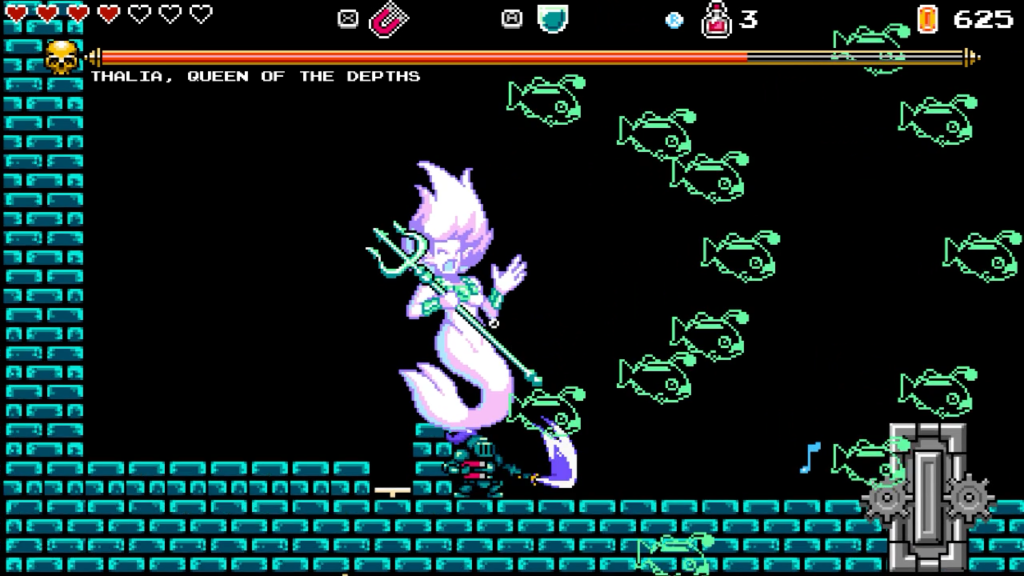
Each boss is built on solid pattern design which has achieved near-perfection in indie platformers of the past decade, encouraging me to strike during brief moments of vulnerability but punishing me hard if I linger too long. Most bosses are tough but also have checkpoints right outside their door, ensuring I stay involved in mastering their unique mechanics and not on running back long distances to try again. If I could say Cathedral excels anywhere, it would be its boss design.
Cathedral is a minimally competent adventure platformer. It does very little new with the concept, has a forgettable plot with weak resolutions, and an uninteresting world. If there’s anything I could recommend it for, it would be its crushing difficulty. It begins simply, but by the end requires sharp timing, practiced knowledge, and committed persistence. The casual and the light-hearted should not look to Cathedral for a good time, but genre fans looking for something especially punishing may see past its otherwise mundane design.